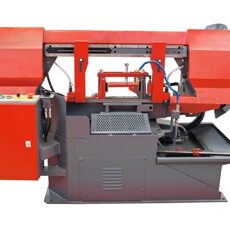Planer machine
Planer machines are used in conjunction with milling, but differ from it in the kinematics of tool movement. While the milling cutter rotates, the cutter on the planer moves reciprocally. In addition, such equipment is sometimes used to work with grooves and grooves. Depending on the direction of processing, planer machines can be longitudinally planing or transversely planing. The principle of processing blanks on these varieties is significantly different.
Longitudinal planer machines are designed for processing relatively short surfaces. In this case, the table to which the workpiece is attached moves, while the cutter is installed in the tool head of the caliper and remains stationary relative to the machine bed. In cross-planer machines, the opposite is true: the cutter moves, and the part fixed on the table remains stationary.
Planer machines have lower productivity compared to milling machines, since they are characterized by an idle stage when the workpiece or cutter is moved to a new position. However, the drive does not require such an amount of energy, since there is no rotational movement of the tool, characteristic of milling machines, which reduces the energy consumption of the drive motor.
Upon request, we can send you an offer from EU and Asian manufacturers.

